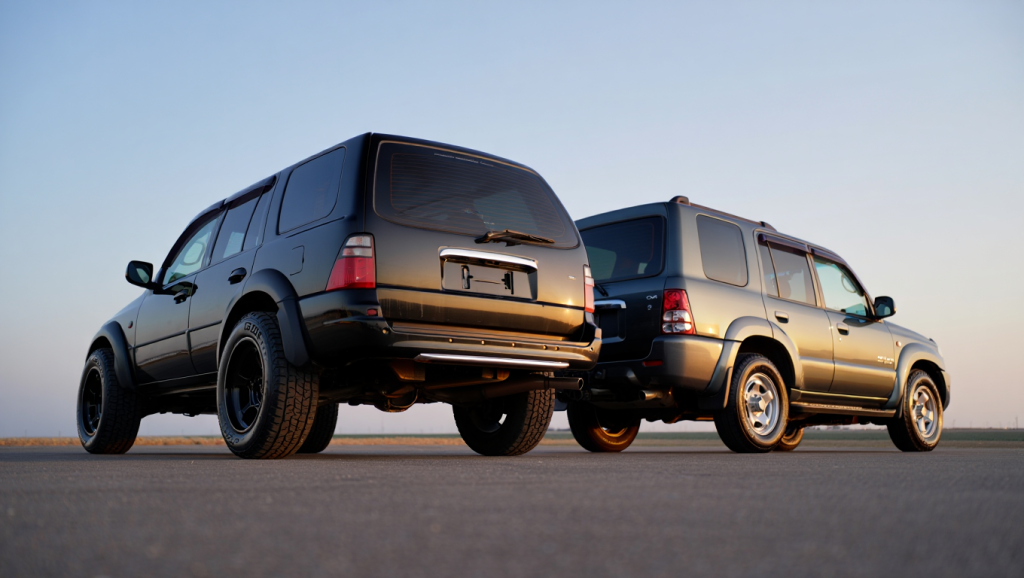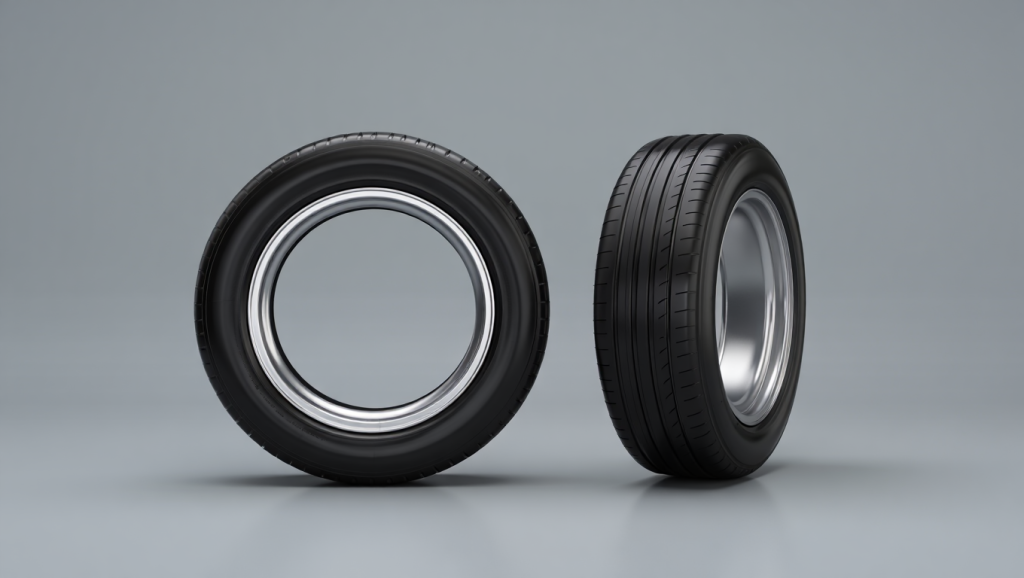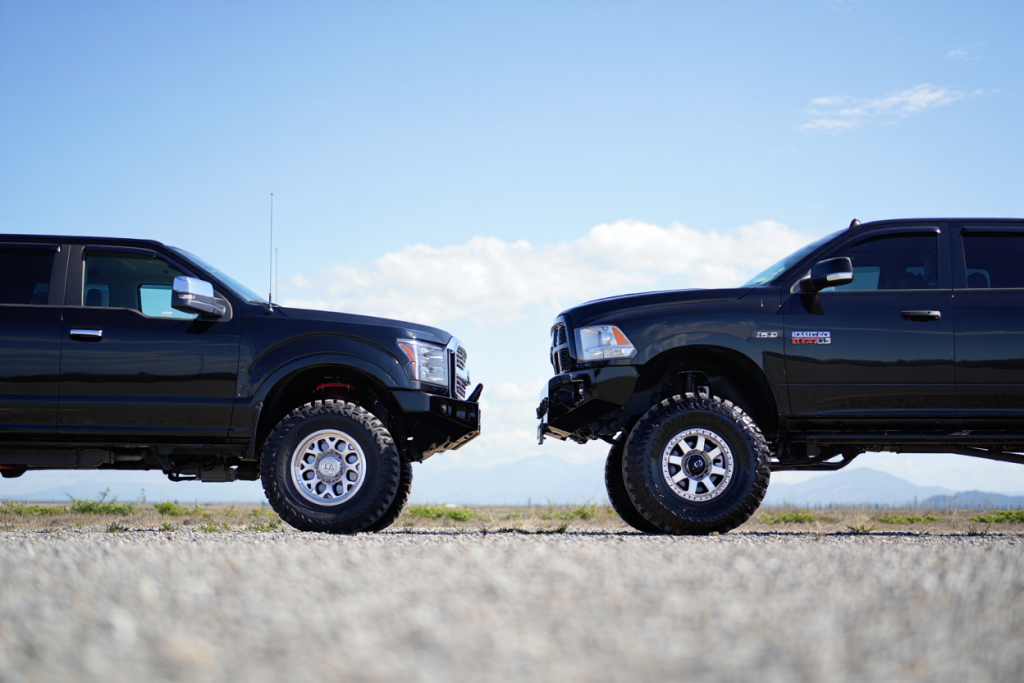Choosing the right tire size can significantly impact your vehicle’s handling, safety, and performance. If you’re debating 235 vs 245 Tires, it’s essential to understand how these options differ in grip, stability, and ride comfort. For most drivers seeking a balance of smooth handling and reliable performance, the Fullway All-Season 235 Tires stand out for their comfort and consistent all-season traction. Let’s explore why these tires might be your best choice.
Why Do I Recommend the Fullway All-Season 235 Tires?
The Fullway All-Season 235 Tires offer a perfect combination of comfort, durability, and all-weather performance. Here’s why these tires are my recommended choice over the Mastertrack BADLANDS 245 Tires:
- Optimal Handling and Steering Response – The 235 tires provide more precise steering and smoother handling, particularly on highways and urban roads. The 245s, being wider, offer slightly less nimble handling in tight turns.
- Better Fuel Efficiency – Smaller width reduces rolling resistance, helping save fuel over time compared to 245 tires.
- All-Season Versatility – Fullway 235 Tires excel in wet, dry, and light snow conditions. While 245 Tires also perform well, their wider footprint can slightly compromise traction in slippery conditions.
- Comfortable Ride – The 235 Tires absorb road imperfections efficiently, providing a softer ride. The 245 Tires can feel stiffer due to the increased width.
- Durability and Wear Resistance – Constructed with premium rubber, the 235s resist wear and maintain tread integrity longer, even with daily use. The 245 Tires are robust but may wear faster in city conditions.
- Cost-Effective Choice – Offering high-quality performance at a lower price point, the 235 Tires are ideal for drivers seeking value.
- Easy Fitment – These tires fit most sedans, coupes, and SUVs without modifications. The 245 Tires may require checking wheel clearance or alignment adjustments for some vehicles.
- Balanced Performance – With a focus on both highway and occasional off-road handling, the 235s are versatile for various driving conditions.
For these reasons, the Fullway All-Season 235 Tires are the recommended option for most drivers looking for balance, reliability, and value.
Side By Side Comparison Chart: 235 vs 245 Tires
|
Features |
Fullway All-Season 235 Tires | |
| Tire Width | 235 mm | 245 mm |
| Performance Focus | All-Season | All-Terrain |
| Handling | Precise, responsive | Slightly less agile |
| Ride Comfort | Smooth, cushioned | Stiffer ride |
| Fuel Efficiency | Better | Slightly lower |
| Wet Traction | Excellent | Very good, slightly wider footprint |
| Durability | High | Durable, may wear faster in city use |
| Price | More affordable | Slightly higher |
| Fitment | Fits most sedans & SUVs | May require wheel clearance check |
| Versatility | Highway & light off-road | More off-road oriented |
What Common 235 vs 245 Tires Can Do?
Both Fullway 235 Tires and Mastertrack 245 Tires share several features that make them reliable options:
- Enhanced Traction – Both tires offer solid grip in wet and dry conditions, reducing the risk of skidding.
- Durable Construction – Reinforced sidewalls protect against punctures, cuts, and minor road hazards.
- Tread Pattern Design – Deep tread grooves ensure water evacuation and prevent hydroplaning.
- All-Weather Performance – Both perform well across seasons, handling light snow and rain effectively.
- Tire Longevity – Built to provide long-lasting tread life under normal driving conditions.
- Noise Reduction – Designed to minimize road noise for a more comfortable ride.
- Handling Stability – Both provide stable handling on straight roads and curves, enhancing safety.
Common Features of 235 vs 245 Tires
| Features | Fullway All-Season 235 Tires | Mastertrack BADLANDS 245 Tires |
| Wet Traction | Excellent | Very good |
| Reinforced Sidewalls | Yes | Yes |
| Deep Tread Pattern | Yes | Yes |
| Noise Reduction | Yes | Yes |
| All-Weather Performance | Yes | Yes |
| Handling Stability | Yes | Yes |
| Tread Life | Long | Long |
| Hydroplaning Resistance | Yes | Yes |
A Detailed Comparison of the 235 vs 245 Tires

Tire Width and Fitment
Fullway All-Season 235 Tires
The 235 mm width offers a balanced footprint that ensures stable handling while maintaining compatibility with most sedans, coupes, and SUVs. This size is ideal for drivers who want smooth highway performance without compromising safety or requiring modifications.
Mastertrack BADLANDS 245 Tires
With a slightly wider 245 mm width, these tires provide more contact with the road, enhancing traction in some conditions. However, this can reduce steering responsiveness and may require checking wheel clearance on some vehicles, especially compact SUVs or sedans.
Handling and Steering Precision
Fullway All-Season 235 Tires
These tires excel in providing precise, responsive handling. Drivers benefit from smooth cornering and excellent stability at higher speeds, making them ideal for both city and highway driving.
Mastertrack BADLANDS 245 Tires
The wider footprint increases stability on straight roads but slightly reduces maneuverability. Steering can feel heavier, especially during quick turns or sudden maneuvers, making them better suited for open roads or off-road conditions.
Ride Comfort
Fullway All-Season 235 Tires
The 235 tires offer a cushioned, smooth ride by efficiently absorbing bumps and road imperfections. This makes long commutes and highway drives more comfortable without sacrificing safety.
Mastertrack BADLANDS 245 Tires
Due to their larger size and reinforced structure, the 245 tires provide a stiffer ride. While this improves off-road stability, it can be less comfortable on paved roads or uneven city streets.
Traction and Off-Road Performance
Fullway All-Season 235 Tires
These tires perform well in all weather conditions, including wet roads and light snow. Their tread pattern ensures excellent water evacuation, minimizing the risk of hydroplaning.
Mastertrack BADLANDS 245 Tires
The 245 Tires shine in off-road scenarios due to the wider surface area and aggressive tread. They handle mud, gravel, and light snow effectively but may overperform in areas where precise handling is required.
Durability and Tread Life
Fullway All-Season 235 Tires
Constructed with premium rubber compounds, the 235 tires are resistant to wear and provide long-lasting tread life under daily driving conditions. They handle city and highway roads without significant degradation.
Mastertrack BADLANDS 245 Tires
These tires are built for toughness but may experience faster wear when used predominantly on paved roads. Their construction is optimized for off-road durability rather than long-term city driving.
Fuel Efficiency
Fullway All-Season 235 Tires
Smaller width reduces rolling resistance, helping improve fuel economy compared to wider tires. Ideal for drivers who prioritize efficiency alongside performance.
Mastertrack BADLANDS 245 Tires
Wider tires increase rolling resistance slightly, which can lead to higher fuel consumption over time, particularly during city driving or long highway trips.
Cost and Value
Fullway All-Season 235 Tires
These tires offer excellent value, providing a combination of durability, comfort, and all-season performance at a reasonable price. They are perfect for drivers seeking quality without overspending.
Mastertrack BADLANDS 245 Tires
The 245 Tires are slightly more expensive. While they offer superior off-road traction, they may not provide proportional benefits for everyday driving, making them a less cost-effective option for general users.
Conclusion
After a detailed comparison of 235 vs 245 Tires, the Fullway All-Season 235 Tires emerge as the better choice for most drivers. They provide:
- Smooth, comfortable ride quality
- Precise steering and handling
- Excellent all-season traction, including wet and light snow conditions
- Superior fuel efficiency
- Long-lasting tread life
- Cost-effective performance without sacrificing quality
While the Mastertrack BADLANDS 245 Tires are excellent for aggressive off-road driving and wider traction, the 235 Tires are more versatile and suitable for daily driving, highway commutes, and occasional off-road use. Click below to get your set and upgrade your ride today:
FAQs About 235 vs 245 Tires
Can 245 tires fit all vehicles that use 235 tires?
Not always. 245 Tires are wider and may require checking wheel clearance or modifications for some sedans and SUVs.
Are 235 tires more fuel-efficient than 245 tires?
Yes. Smaller width reduces rolling resistance, improving fuel economy compared to 245 Tires.
Which tire is better for city driving?
The 235 Tires offer smoother handling, a quieter ride, and better comfort, making them ideal for city and highway use.
Are 245 tires better for off-road conditions?
Yes. Wider tires provide more contact with loose surfaces, enhancing traction in mud, sand, and gravel.
Do 235 tires wear faster than 245 tires?
No. 235 Tires typically wear more slowly under standard city and highway conditions due to their smaller footprint.
Can I switch between 235 and 245 tires easily?
Switching requires checking fitment, suspension, and alignment, especially for vehicles not originally designed for 245 mm width.
Which tires are more cost-effective?
The 235 Tires are generally less expensive while offering excellent all-season performance, making them better for everyday drivers.
How do these tires perform in wet or snowy conditions?
Both 235 and 245 Tires provide reliable traction, but 235 Tires offer better maneuverability and stability on slippery roads.

Benjamin Grey is an automotive engineer and writer at Car Parts Advisor. With years of experience in the automotive industry, he shares expert advice on car parts, maintenance, and repairs to help car owners keep their vehicles running smoothly.





